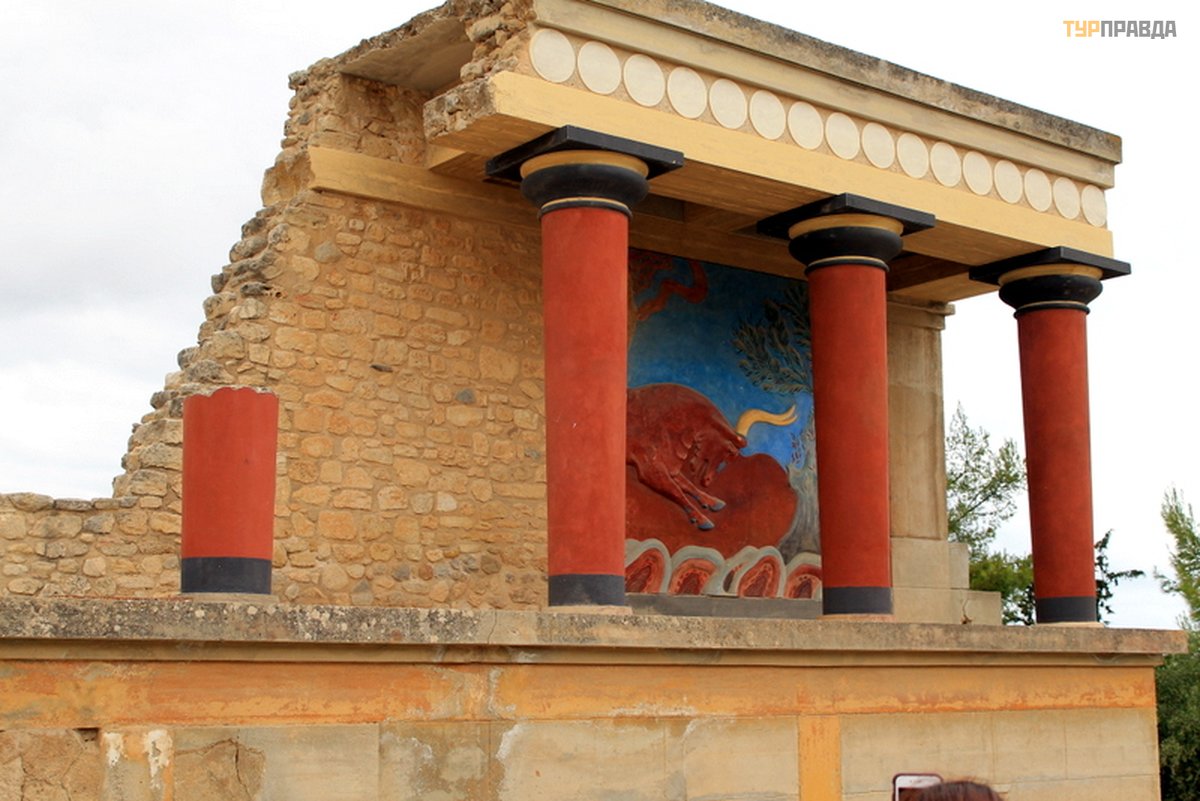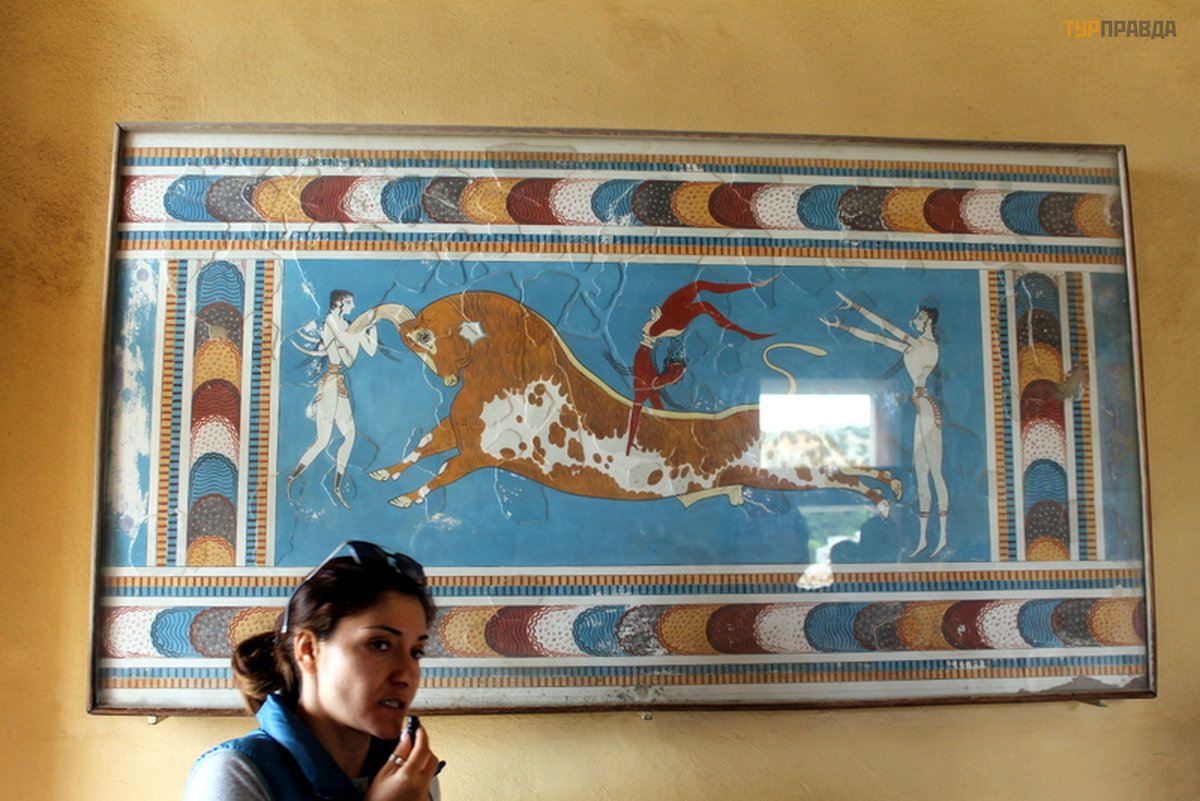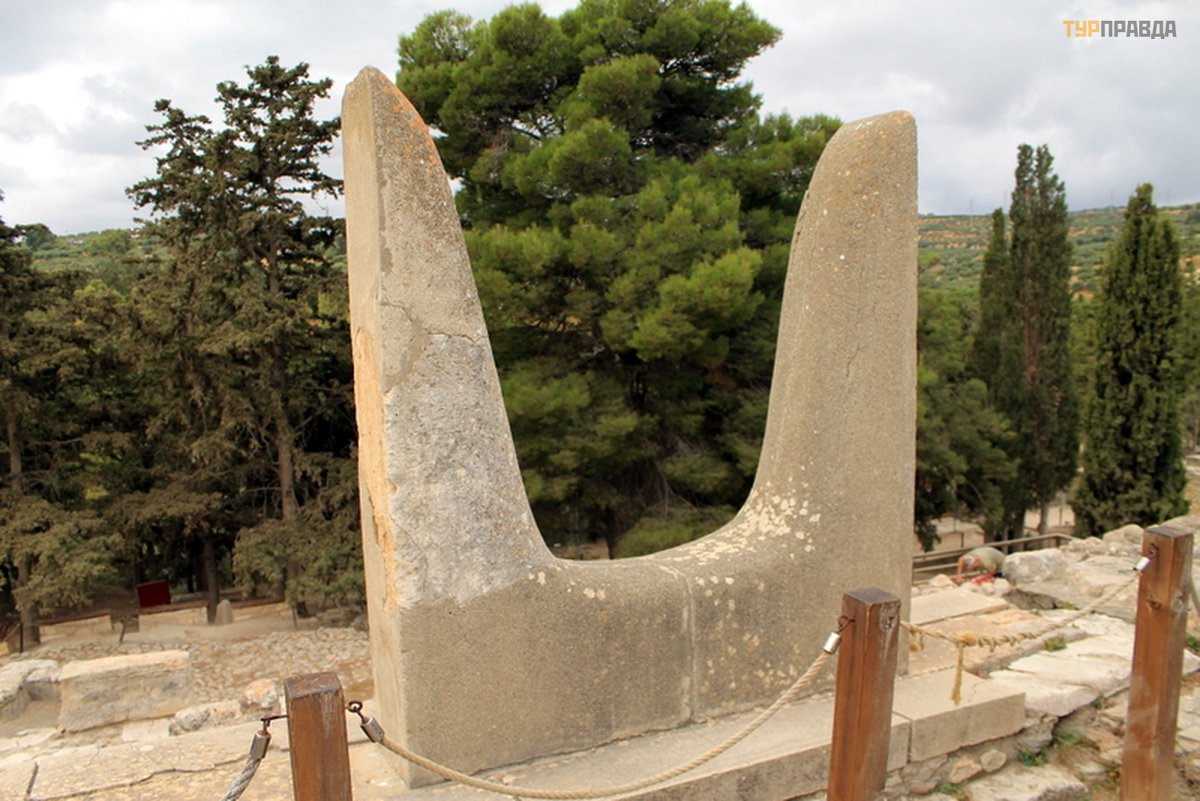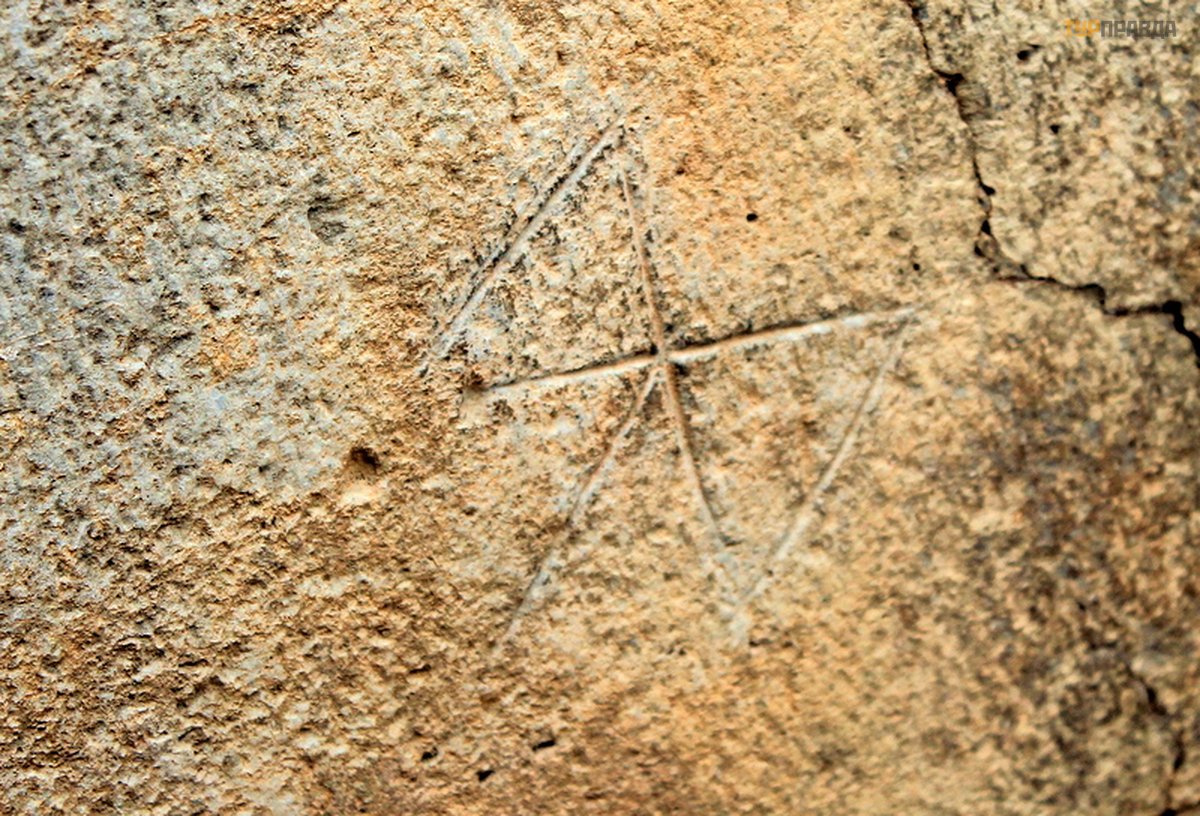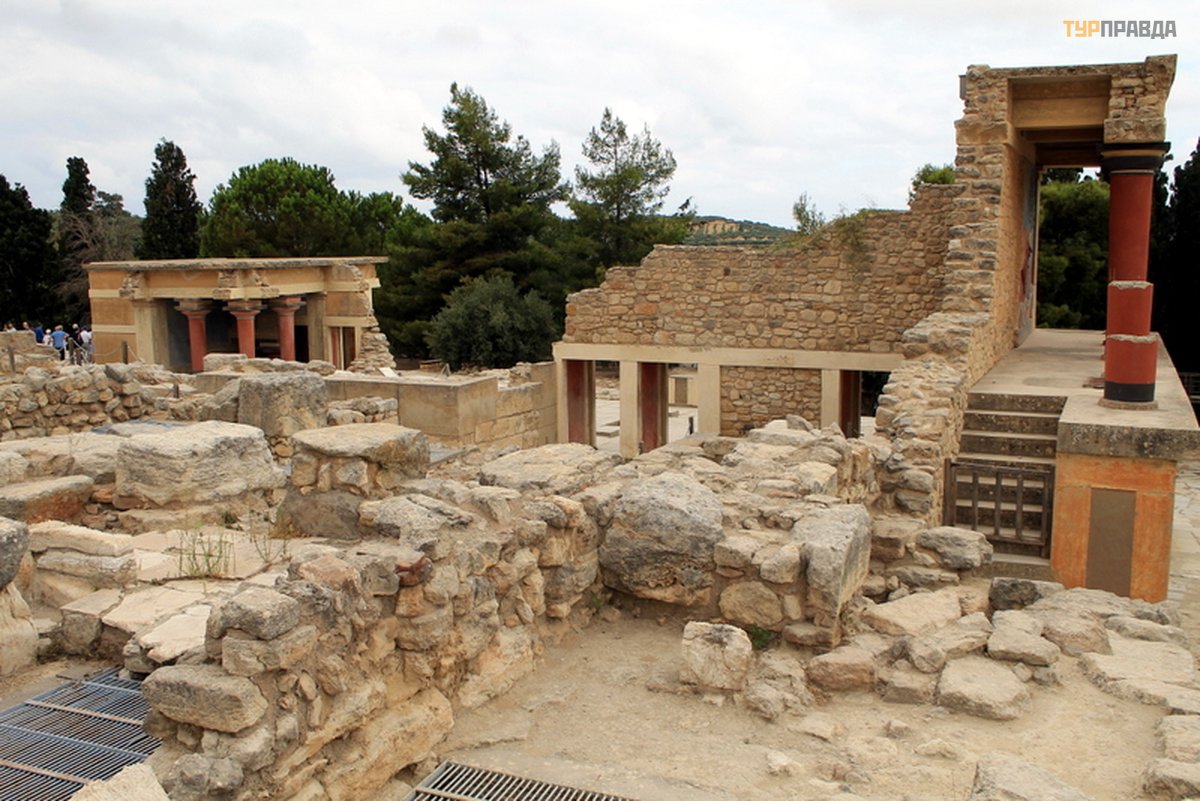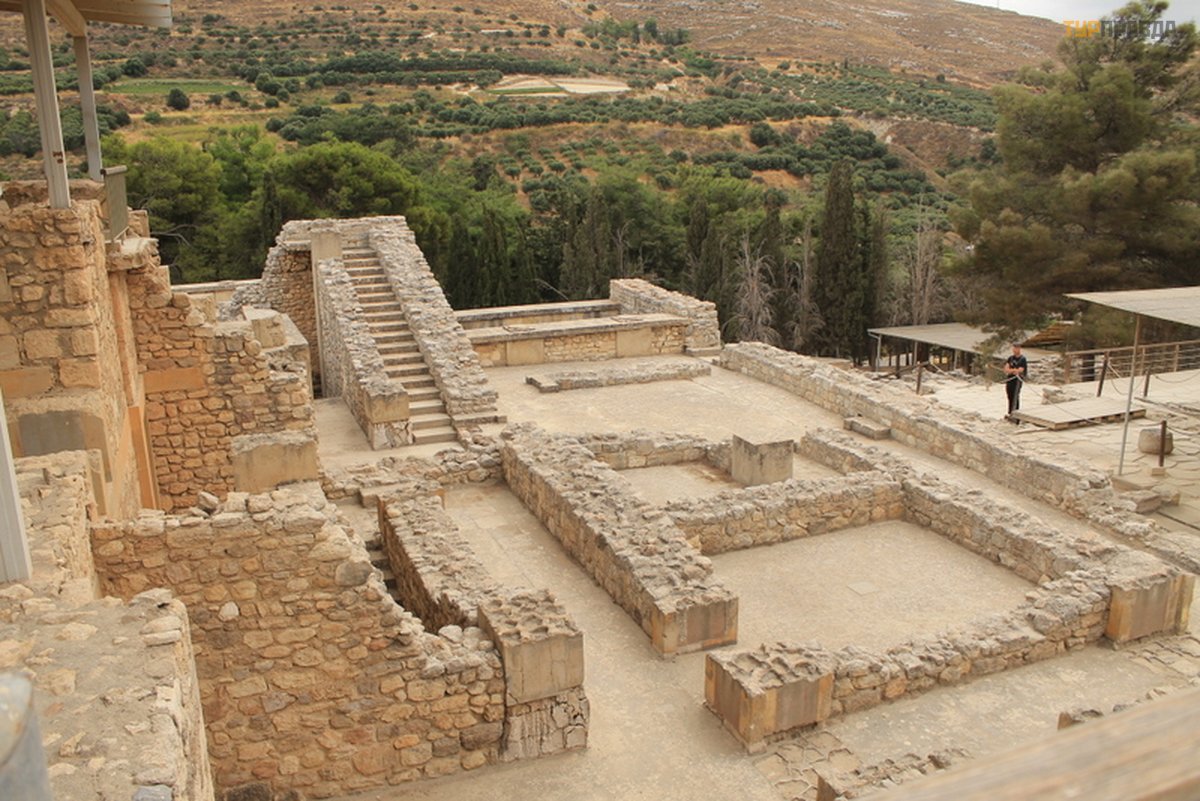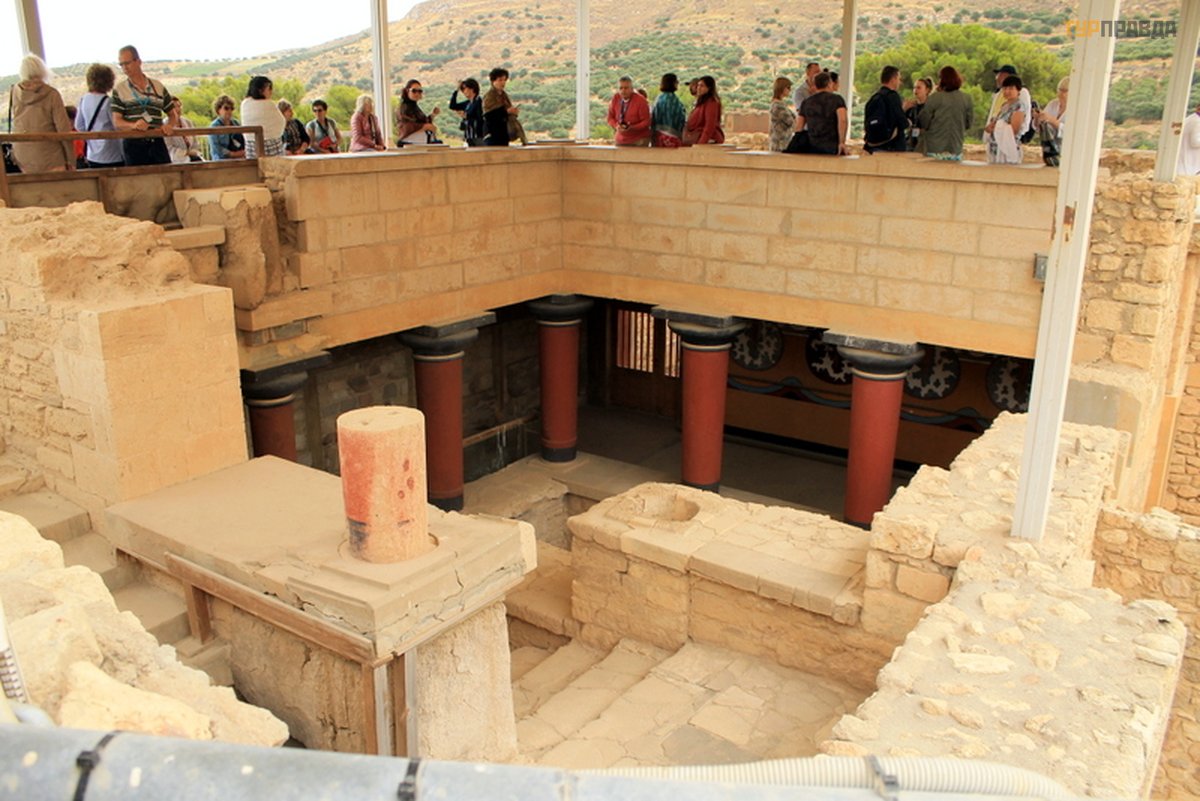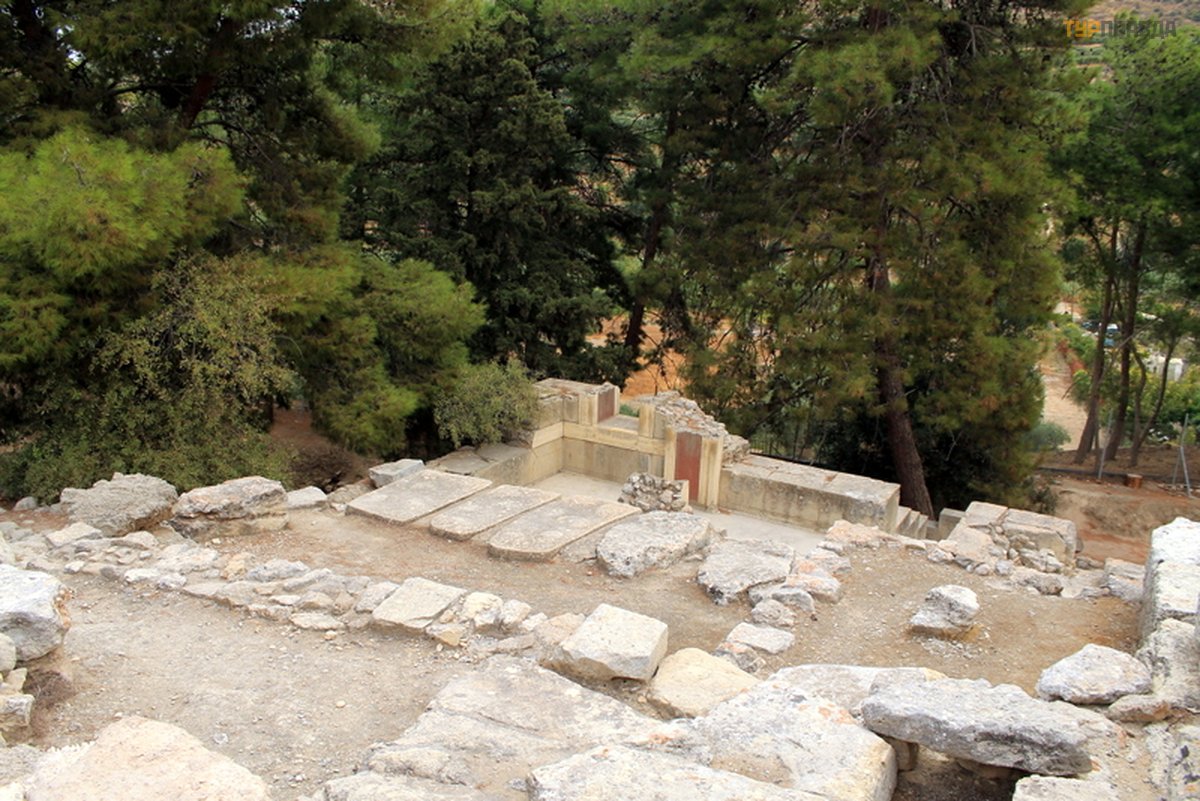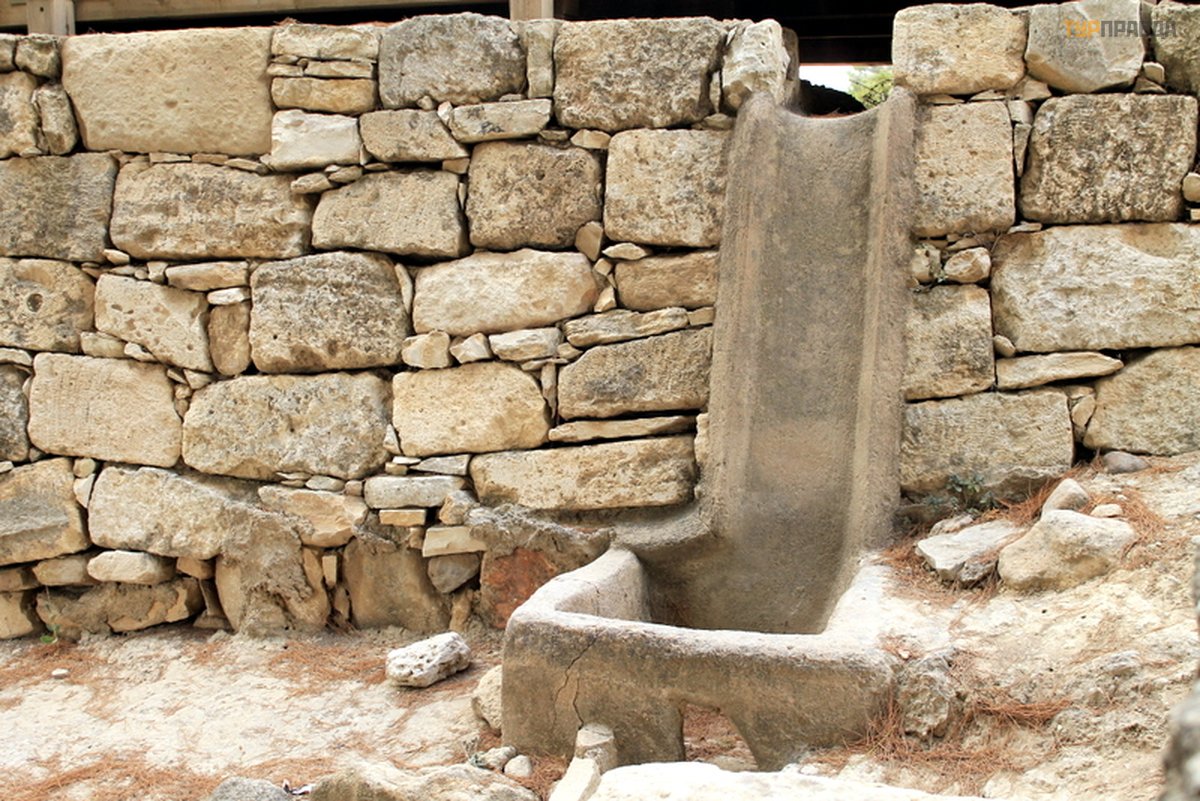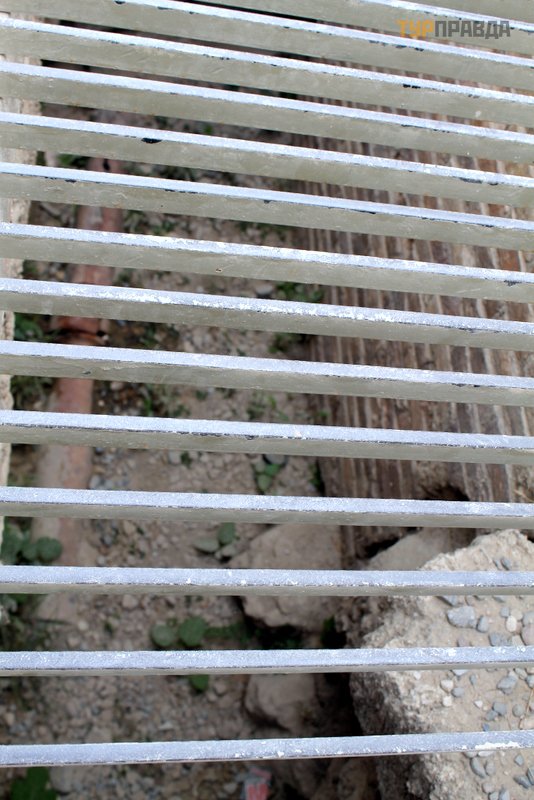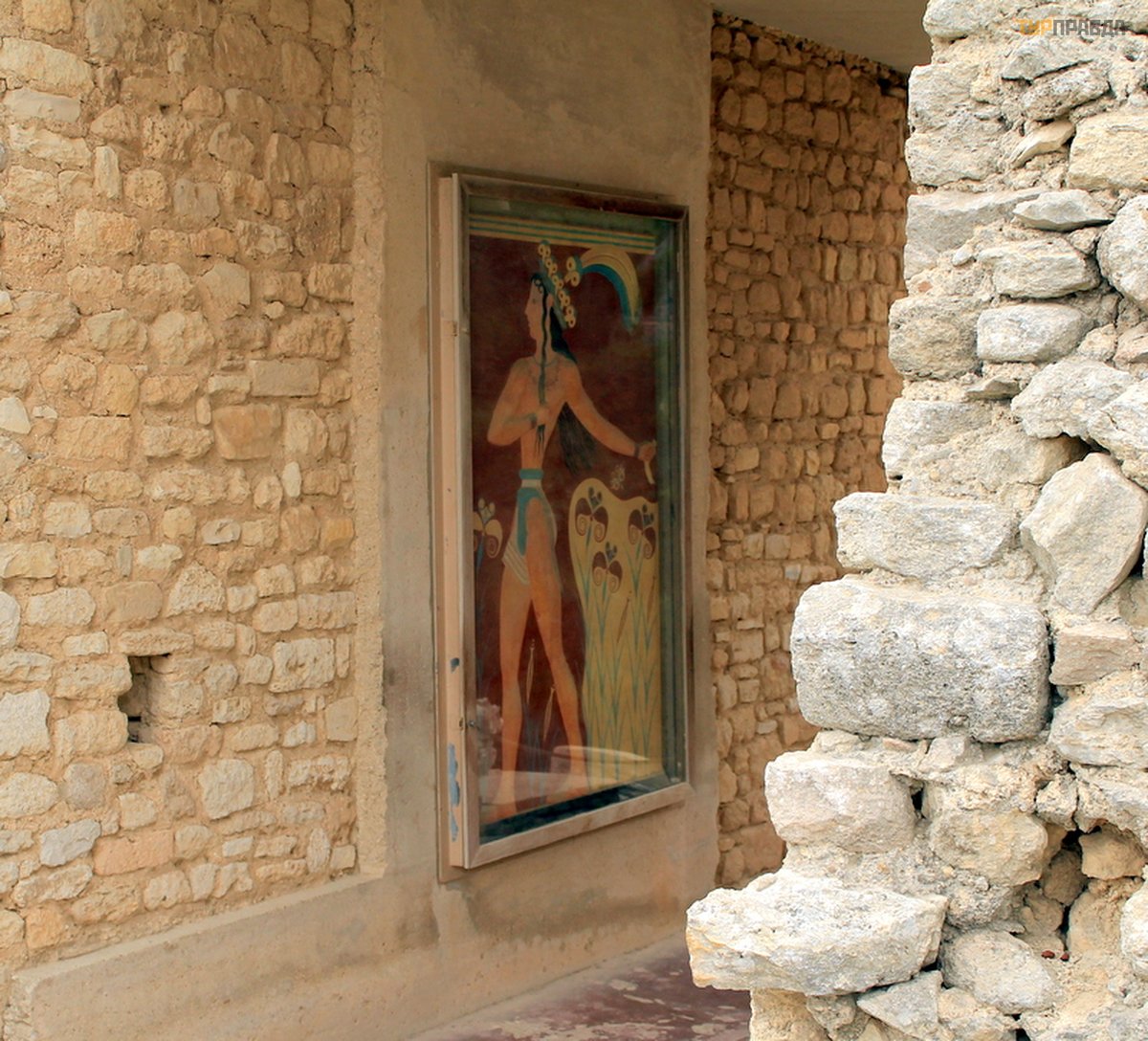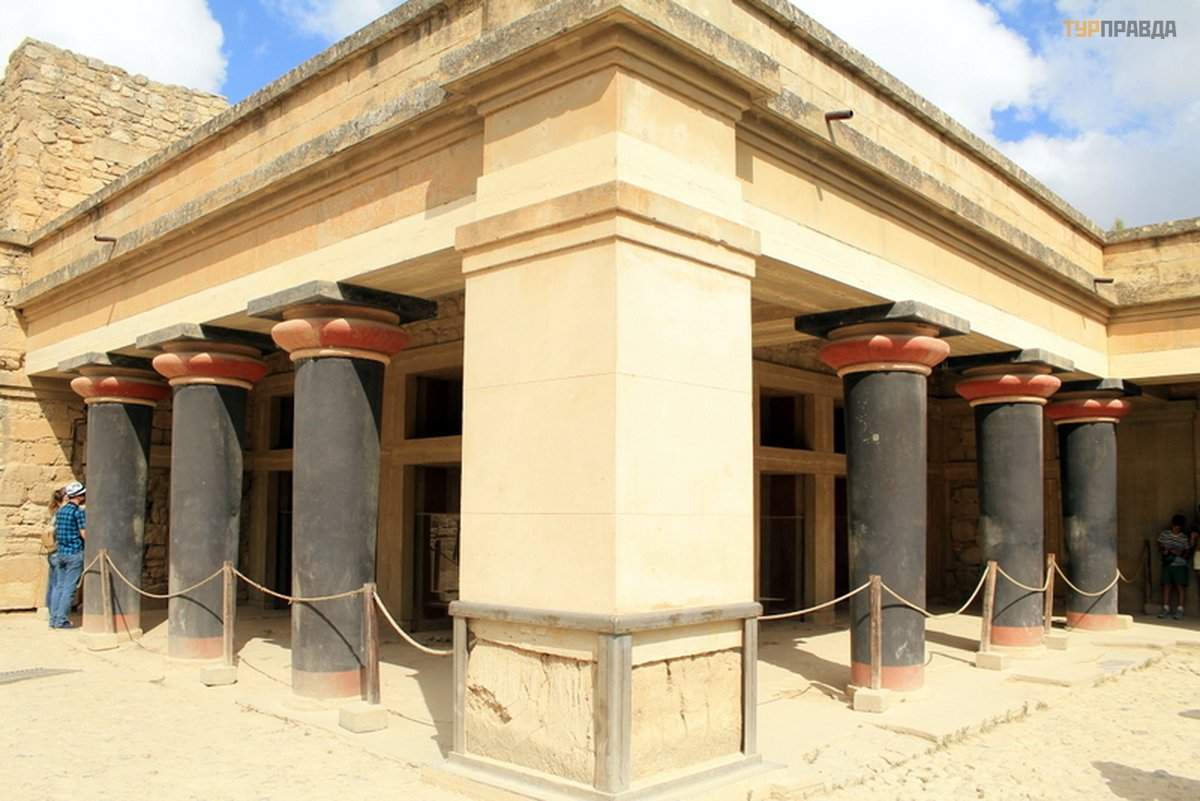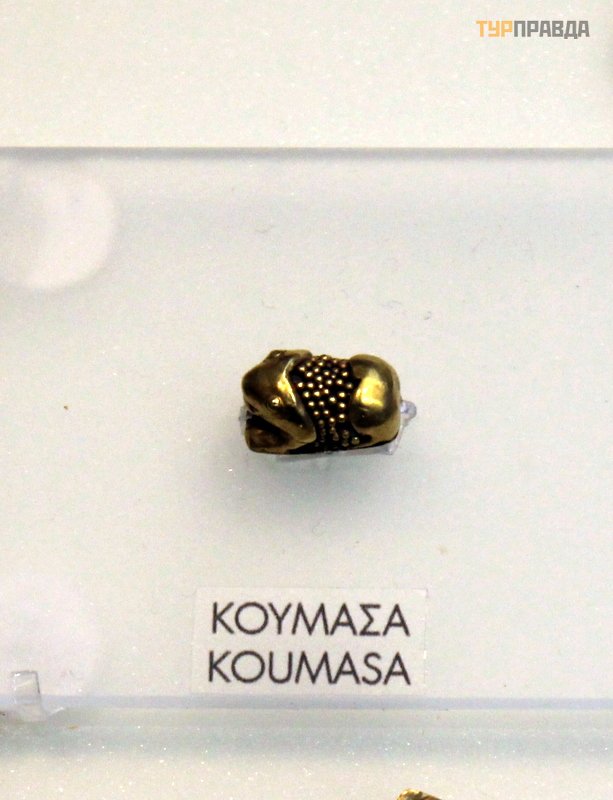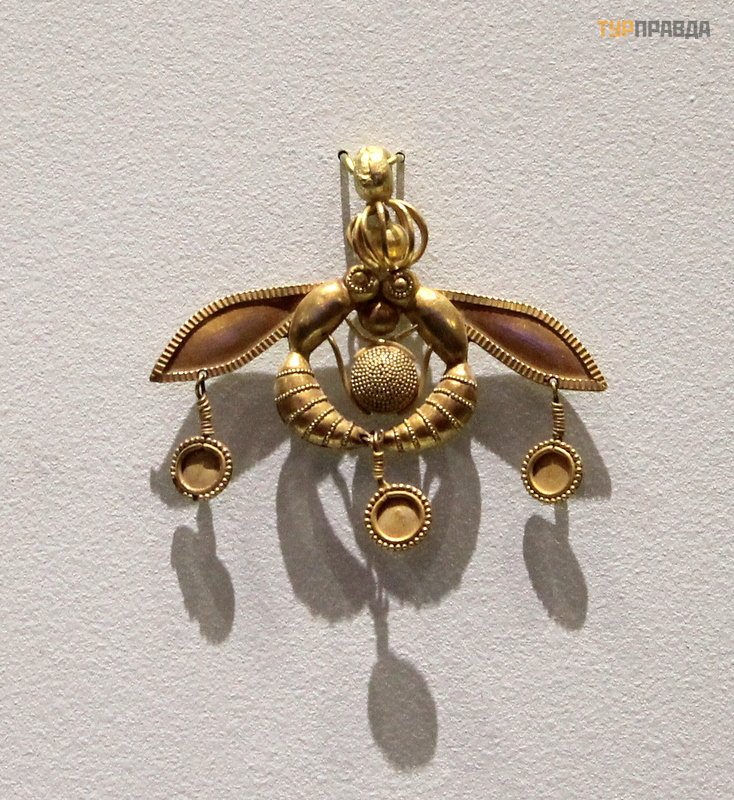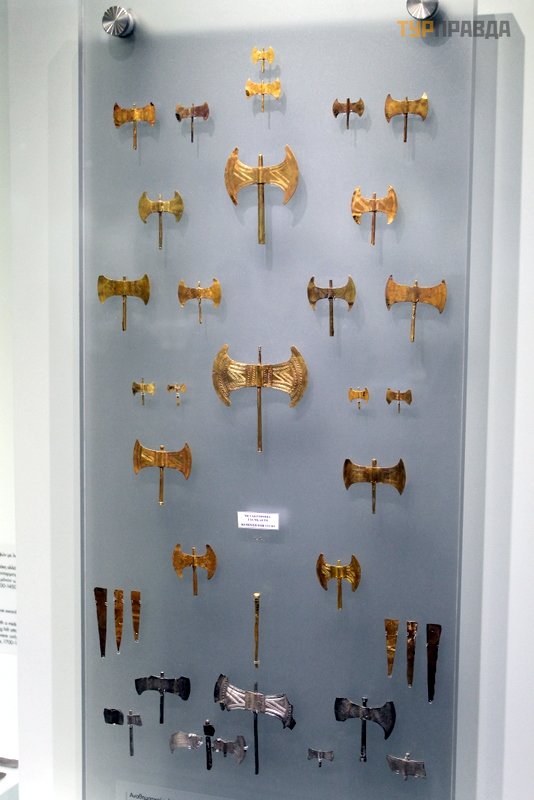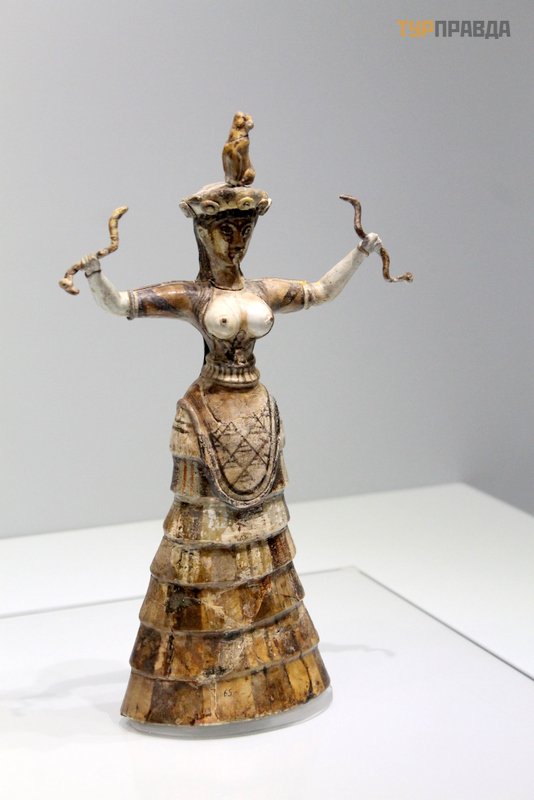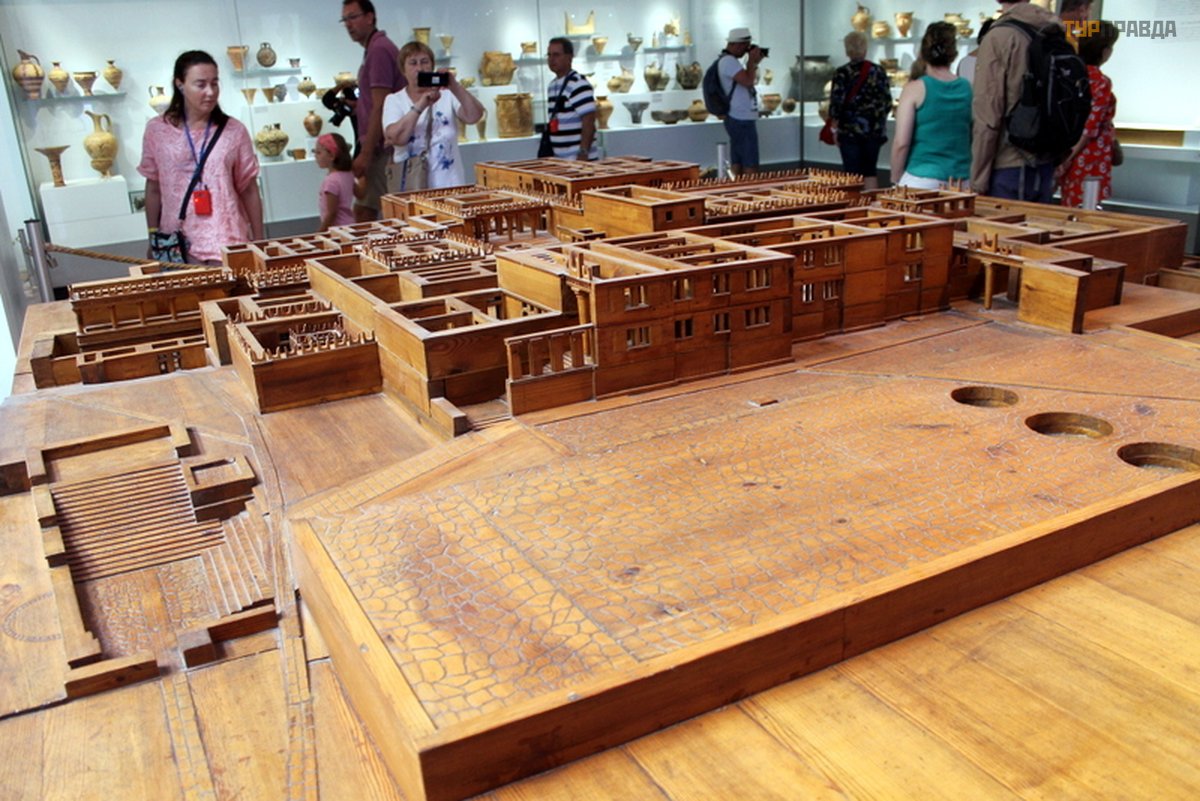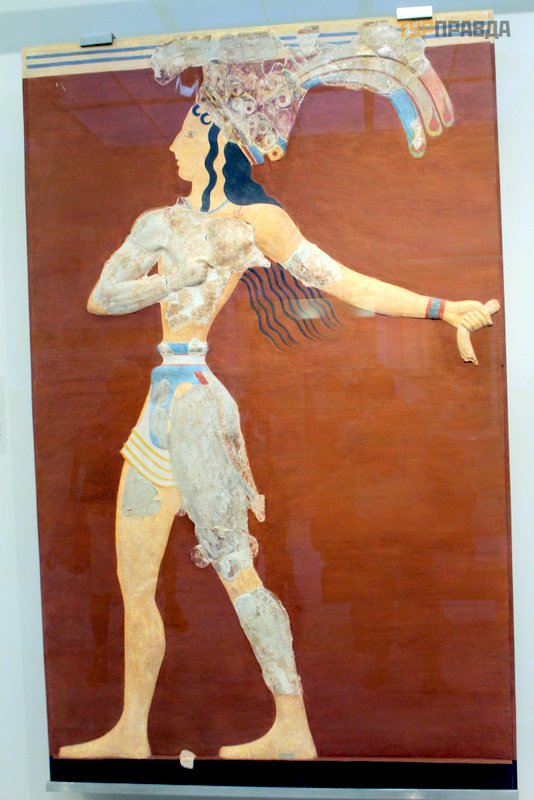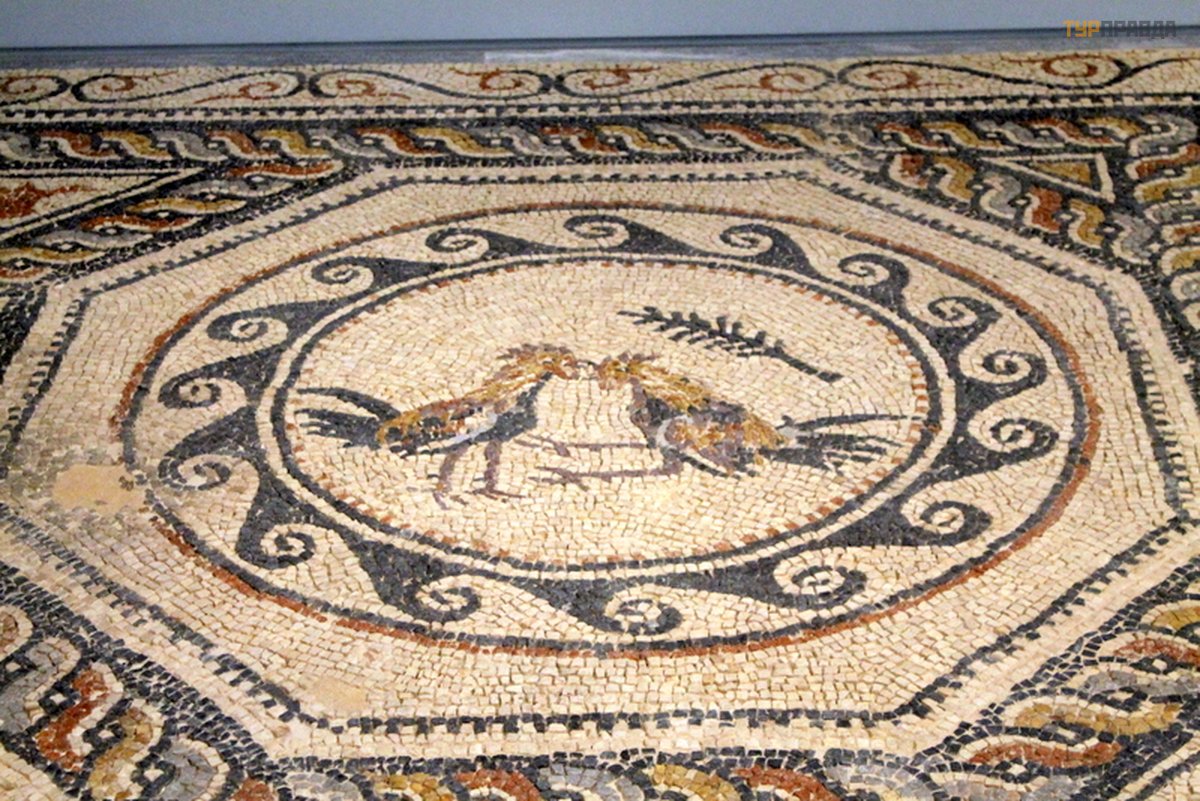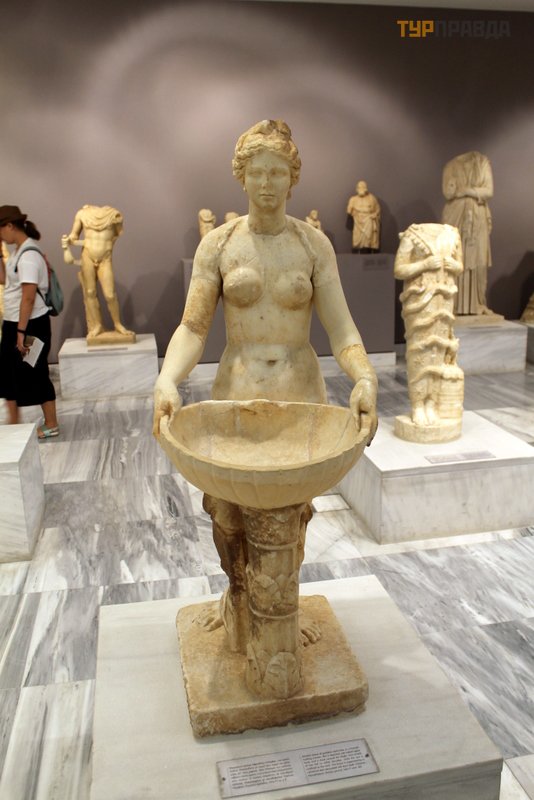By bus, ferry, car… Remembering Crete. Part 2. In the labyrinth of history

To be continued. Start here >>>
And now, since in the previous story I referred to literature, let's recall another source of the world literary heritage - the myths and legends of Ancient Greece, which, among other things, tell about the terrible monster Minotaur and his habitat - the intricate Labyrinth.
That's where we went along the national road on a sightseeing bus. And our tour began from the Knossos Palace - the visiting card of Crete and the place of dwelling of the already mentioned Minotaur. : ))
I will say right away that the trip with the excursion turned out to be a very right decision, because and we got to the palace in the first rows immediately after its opening, and did not languish in a long queue...
… and the young lady-guide turned out to be very literate and told about the history of the palace in a very interesting way…
. . . the myths associated with it, the most popular of which is the legend about the Labyrinth, in which the Minotaur was kept (the sacred horns of a bull are considered a symbol of the Minoan civilization - according to guidebooks, the entire perimeter of the palace was surrounded by such horns). . .
. . . and reality - multiple images on the walls of the palace of double-sided axes called "labrys", possibly giving rise to the name Labyrinth to characterize the Palace of Knossos. . .
. . . and also very logically verified and quickly, but without prejudice to detailed acquaintance, she walked through almost all the rather intricate and located on several levels of the palace premises.
And she introduced us to everything - starting from the ancient sewage system and storm water, which is about 4 thousand years old, but at the same time it functions perfectly to this day...
. . . to the works of art of that time found here, such as the frescoes "Prince with Lilies" or "Processional Road". . .
. . . as well as ordinary handicrafts. . .
…and the Throne Room with an ancient stone throne, which has recently been fenced off from tourists with glass…
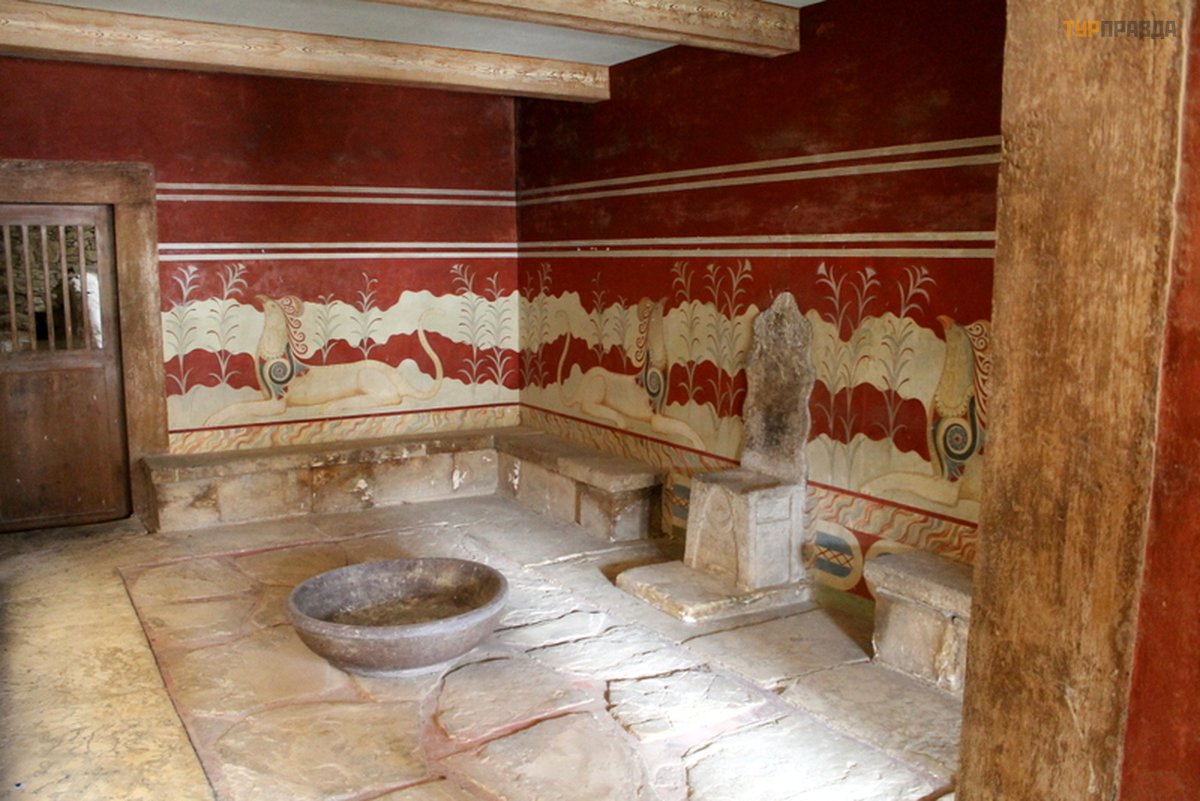 Throne of King Minos in the Throne Room
Throne of King Minos in the Throne Room
. . . and so that they don't feel completely deprived, they put a copy side by side for selfie and Instagram fans. ; )))
In fact, the so-called Megaron (chambers) of the queen with the fresco "Dolphins" remained uncovered by the excursion...
…and the King's Megaron, also called the Hall of Double Axes, which we successfully examined in our free time.
The logical continuation of the excursion was a visit to the Archaeological Museum of Heraklion, famous not only for its huge collection of artifacts from the Minoan era, but also for other artifacts from the history of Crete for a period of more than five and a half thousand years.
A modern museum was built on the site of the ruins of the Catholic monastery of St. Francis, which, in turn, was erected during the time of the Venetians and destroyed as a result of a strong earthquake in 1856.
On the first floor, in chronological order, exhibits of the Minoan collection, found in the excavations of the palaces of Crete and, of course, in Knossos, are exhibited. These are jewelry made of gold and semi-precious stones...
. . . amazing in some cases with filigree work and the highest skill of artisans in such ancient times.
The personal seal of King Minos stands apart in the exposition (in fact, the Minoan ancient civilization found in Crete was also named after the king).
Traditionally, the exposition presents a variety of vases and vessels, as well as other ceramics and household utensils...
… tools of work and life…
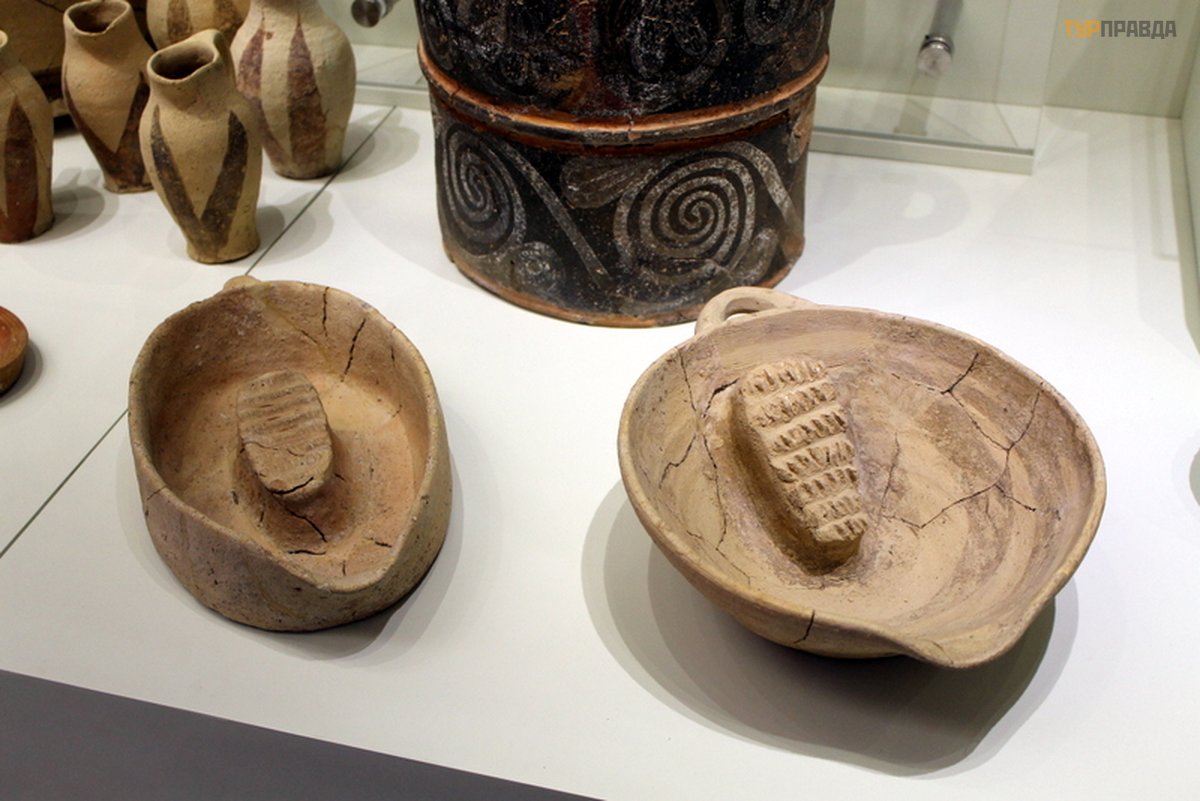 If anything, these are ancient graters : )
If anything, these are ancient graters : )
. . . of course, labry hatchets in various variations. . .
…objects of worship, the most famous of which are faience figurines of the Goddess with snakes from the temple in the Palace of Knossos. It is believed that the creature of the cat family on the head of one of the goddesses symbolizes dominance over nature.
There are also images of bulls with outstanding horns in every sense. : )
And, of course, the world-famous Phaistos Disc, found during the excavations of the palace in Phaistos. This artifact of the Novodvorets period has not yet been deciphered. Presumably, there are religious inscriptions on it. Our guide told us that just recently, scientists managed to voice what was written on the disk. Although I do not quite understand how you can voice something that is not known how to read and what it means. But nevertheless.
By the way, the model of the Knossos Palace is presented in the museum. So you can roughly imagine what and how it was in the best of times. : ) No wonder the palace had the fame of a labyrinth.
The original Minoan frescoes from the Palace of Knossos are exhibited on the second floor of the museum…
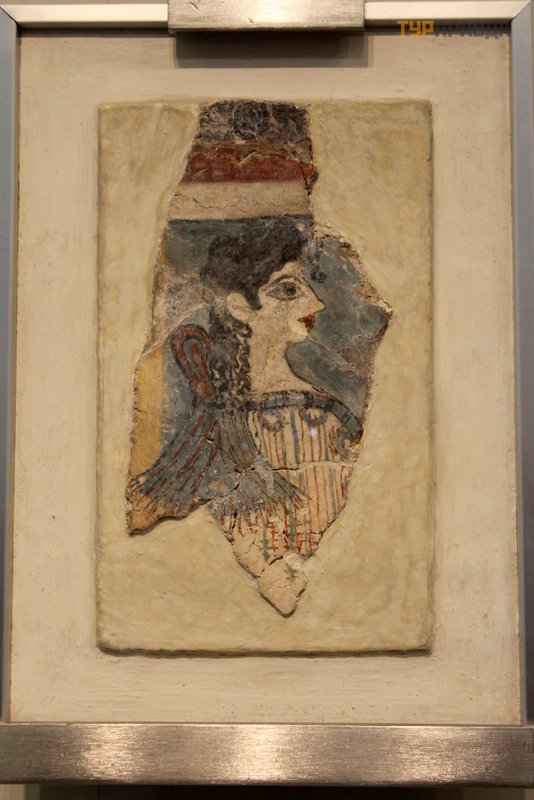 The fresco was named "Parisian"
The fresco was named "Parisian"
. . . and also the principles of their restoration are presented, when literally from the smallest remnants whole pictures from the distant past loomed.
And, of course, what is an archaeological museum without mosaics. . .
. . . as well as statues and figurines? ! So they are here too - from miniature to quite impressive. ; ))
In general, if you have already visited the Palace of Knossos, then a trip to the archaeological museum will be very useful.
 The current owners of the Knossos Palace
The current owners of the Knossos Palace
And then you can walk around Heraklion, which we will do in next part >>>
